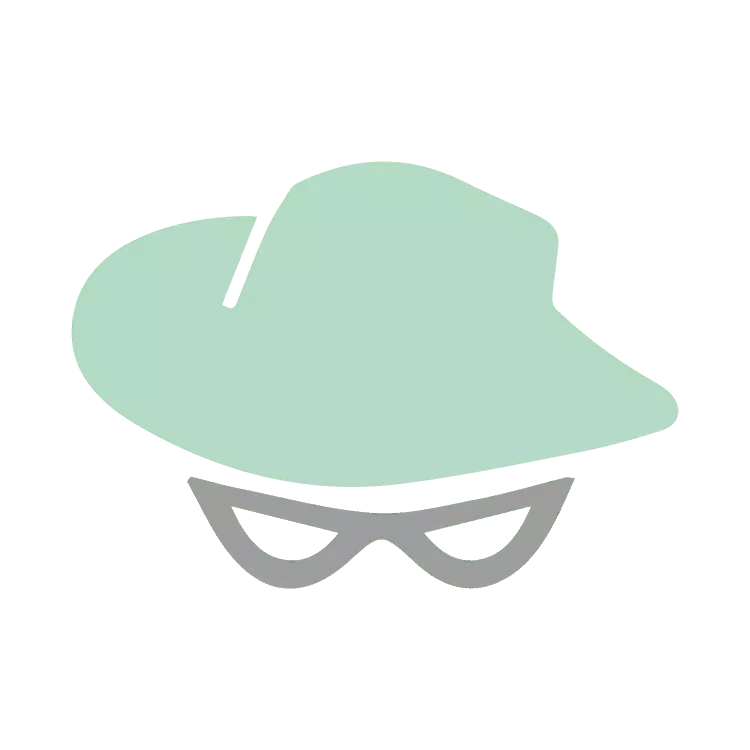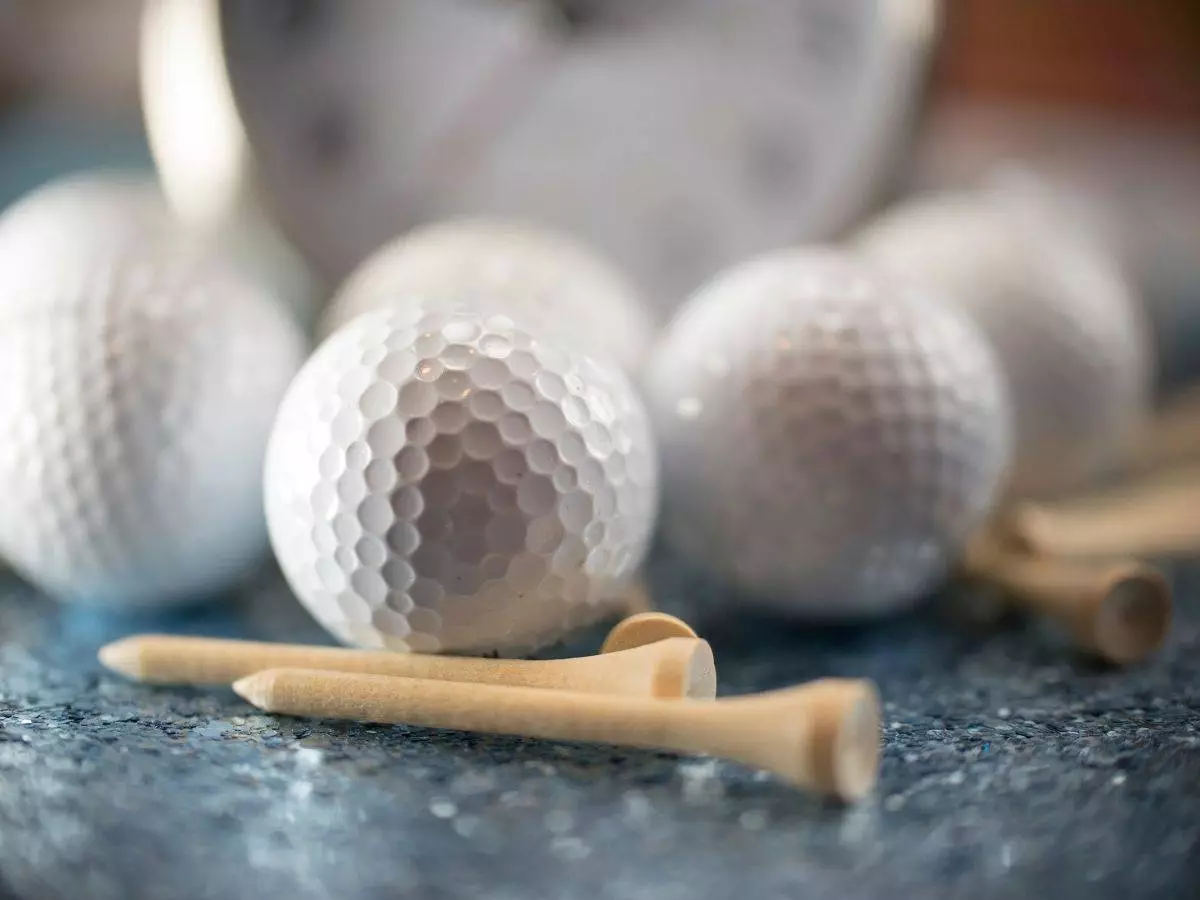First of all, it is probably worth pointing out that they are actually not. It may well be that golf balls have been white since the dawn of civilization, but there are in actual fact a whole range of different colored balls used in the sport of golf.
Yellow balls, orange balls, even light blue and red balls can be seen out there on many a golf course. Sport, like fashion, changes with the times, and golf is not really an exception.
Indeed, the commercialization of sport has had much to do with this. Commercial sponsors and companies like to have their logos displayed out on the green, and quite often this will involve a specific color as well as a design. Sometimes a color may highlight a particular cause.
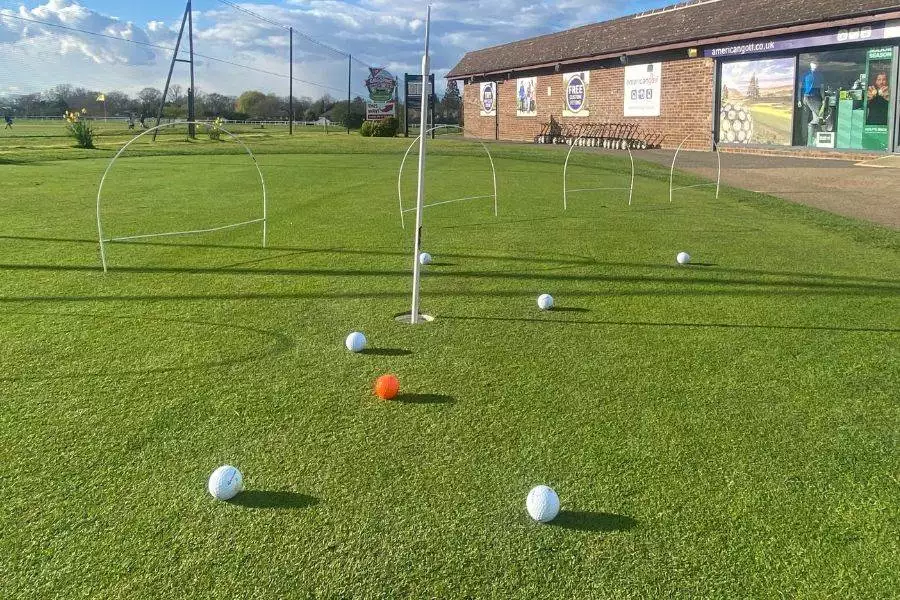
For example, ladies playing with pink golf balls may be using their sport to promote breast cancer awareness. Golf ball manufacturers will always respond to demand, and most of them produce colored balls as well as white balls where there is a requirement for them.
A better question might be “Why are golf balls white in practically every pro golf tournament?”
As with many sports, it is the establishment that lags somewhat behind the wider practice. Pro golfers are instinctive creatures of tradition, and white golf balls remain very firmly a part of that tradition.
Are Colored Golf Balls a Recent Thing?
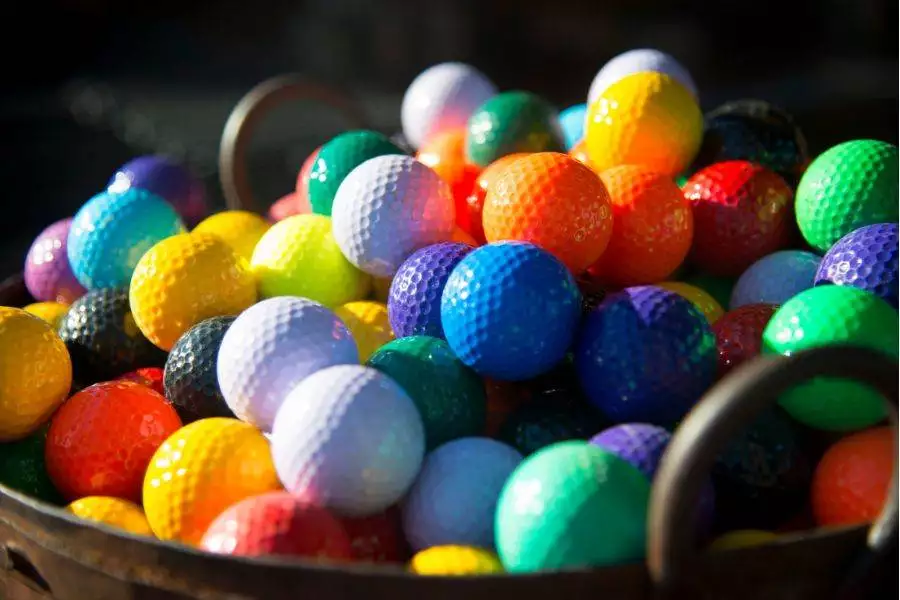
The crux of the matter is that high visibility shades are a relatively recent phenomenon. When golf balls were first designed and used there was no such thing as hi-vis or vibrant color. It was about which basic color would stand out the most strikingly when in the air and, actually more importantly, when dormant upon the ground.
A yellow ball might be difficult to locate from distance in a field of dandelions. A green ball would be a definite no-no when playing on green grass, for the most obvious of reasons.
When the first golf balls were made it was simply easier to produce them in white. Chalk pigments were always readily available and hence it was simpler to use white paint.
Before long it had become an unspoken assumption that white was the golf ball color, and so it remained as the sport progressed and developed down through the years.
Only relatively recently have colored balls begun to enter the field, and even now it tends only to be a thing that only happens on golf courses where players compete socially or for leisure.
How Do White Golf Balls and Colored Balls Compare for Visibility?
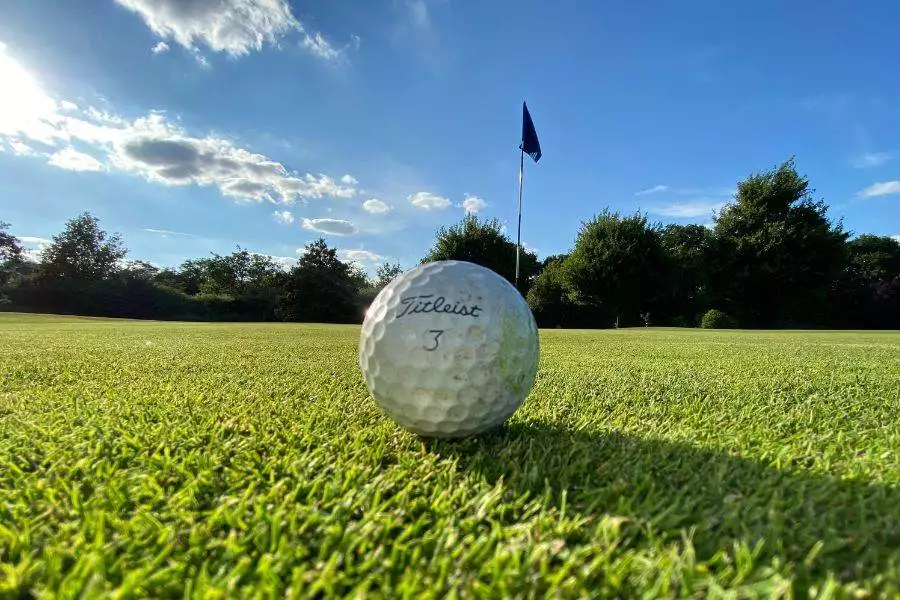
Before hi-vis colors brought improved visibility, there was really no contest between the white ball and any potential tinted option. Contrary to popular belief, it was essentially not so much about how easy golf balls were to spot when in flight.
Upon hearing a shout of “Fore!” it would be a foolish golfer or member of the public who tried to locate an incoming golf ball heading for them at speed. Much better to take immediate evasive action.
In fact, the visibility issue is more about spotting the ball when it is motionless. This means not only when it is resting on the grass, but also potentially when it is in a bunker, beneath the surface of a pool of water, lurking in vegetation or indeed any other conceivable obstruction. White tends to stand out.
Since golf balls became available in some of today’s vibrant colors the natural advantage of the white over the colored ball has diminished somewhat.
A ball that is bright orange is just as easy to spot, some might say easier, and so now it has really become more a matter of the player’s personal preference. And yet still, in competition, professional golfers in the vast majority of cases opt for predominantly white golf balls.
Are All Colors Made Equal?
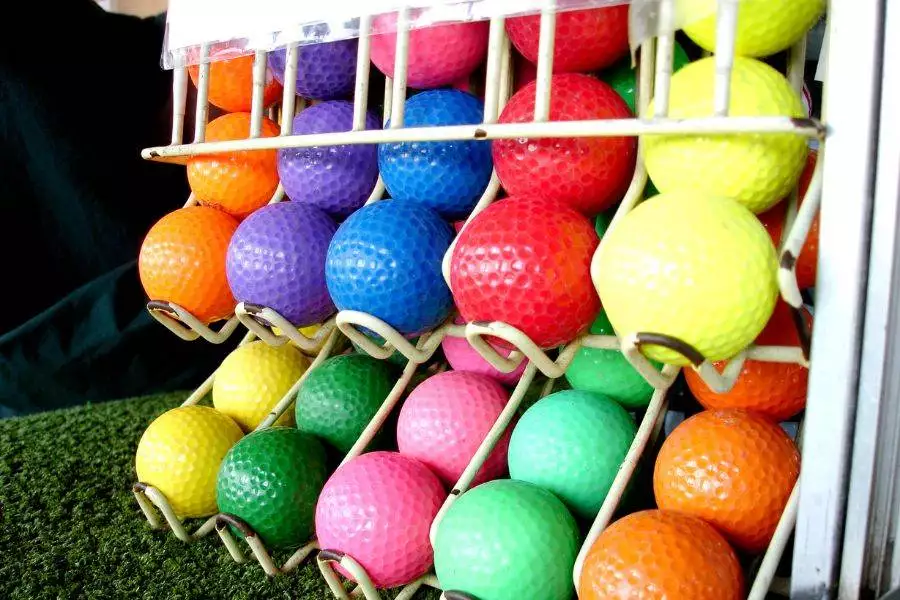
To debate the relative merits of white versus colored golf balls can be to miss the point somewhat. It may be that one color has an advantage over white, whilst others do not.
A lot of thought has been applied within the industry to which color is best, if indeed colored golf balls are to become more common is their usage.
Blue balls, for example, do not seem to fare well in any test. When in flight they can be difficult to see against the sky whilst even on the ground they tend not to be as reflective as some of the brighter shades, especially at times of poor visibility.
The orange ball, on the other hand, does make for excellent contrast – except maybe in the fall when it can blend in with surrounding foliage.
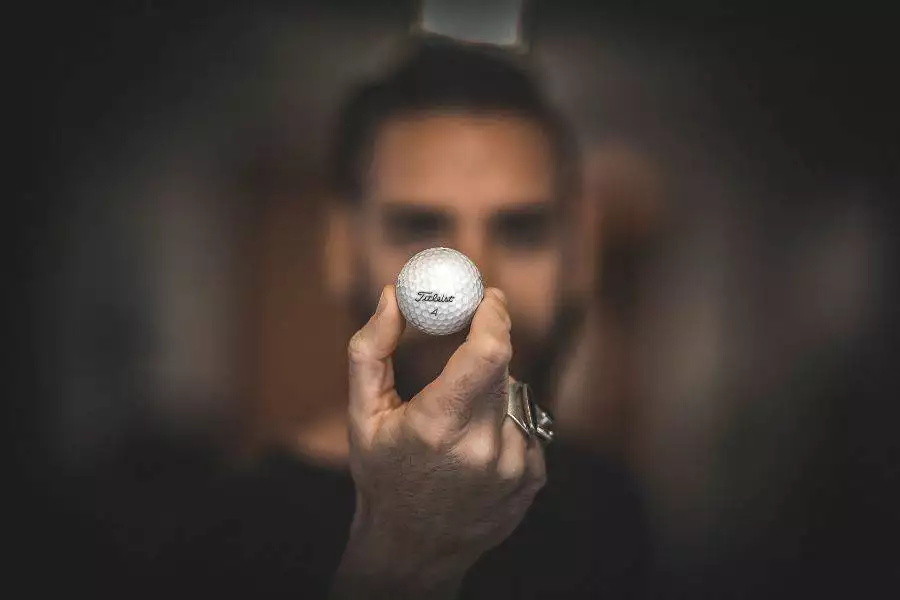
Red can be a good color to use during daylight hours. The main problem is that in poor golfing conditions or fading light it can appear dark, even black. A pink ball is usually a better choice for this reason.
For those who covet a change from the traditional white, a yellow golf ball is probably the best alternative. Certainly the debate over which color to use most often boils down to an individual preference between white and yellow.
One other option worthy of mention is the neon ball. Whichever color is preferred, neon has the advantage of extra visibility over standard colors. A neon yellow ball can be seen clearly in situations where most others probably couldn’t.
Can the Ball Color Be Changed During a Round?
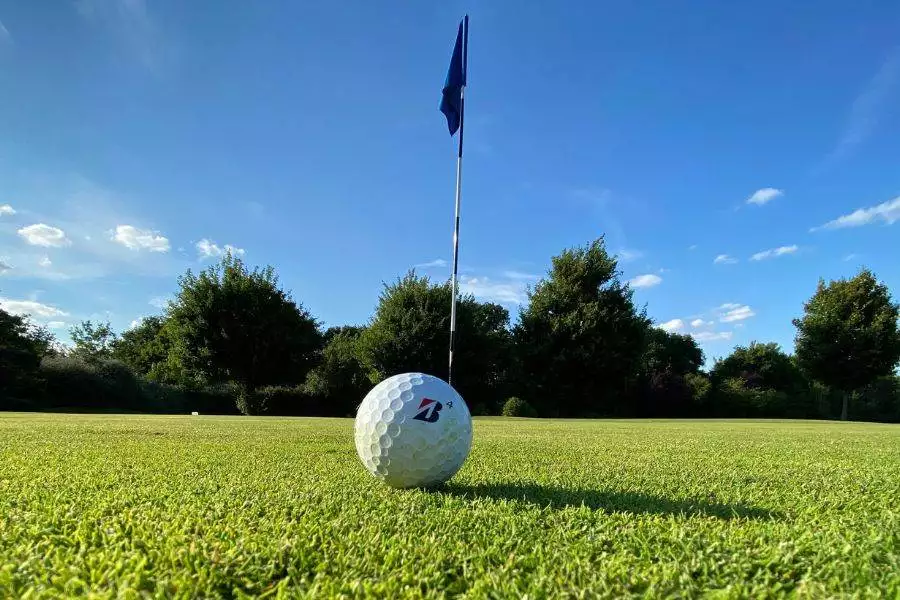
Generally the color of a golf ball can be changed between rounds, but not during rounds. If a specific color is being used and becomes lost, it is incumbent upon the player to ensure that he or she has further supplies of the same colored balls. Failure to do so is likely to result in incurring a penalty.
The purpose of this rule is to ensure consistency. If however a round is completed the next may be played with an entirely different ball.
As a typical PGA tour event has four rounds, it would be possible for a player to use four different colors within the rules.
How Important is Tradition in Golf?
Now that highly visible color makes tinted golf balls comparable with those painted white when it comes to visibility, the fact that most golfers still use white during PGA tour and other competitions can only really come down to tradition.
This is the very reason, and can be the only reason, why this practice persists to the present day.
But one should never under-estimate, 0r gainsay, the importance of tradition. Just as the sporting of classical golfing attire or the shouting of “fore” are things that are done as much for the sake of observance as for practical reasons, so the white golf ball remains a quintessential feature of this great game.
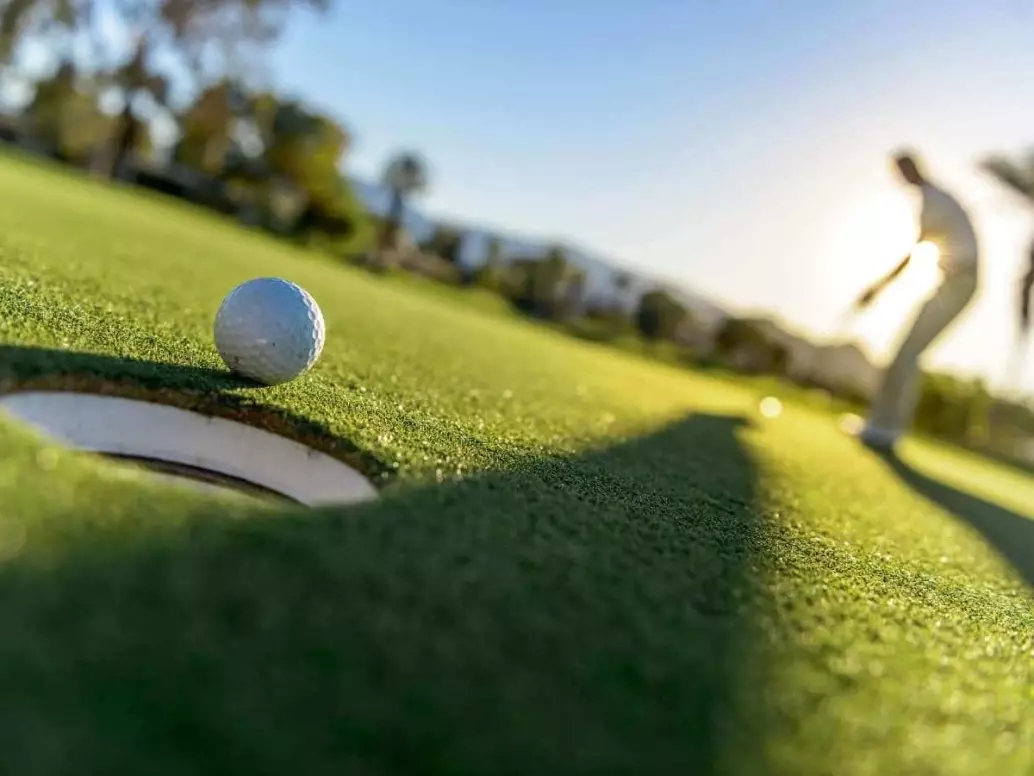
This is why most golf ball companies still color most of their standard golf balls white.
On the other hand traditions are sometimes there to be challenged. There is some evidence to suggest that bright yellow golf balls in particular can offer superior visibility to white, and for this reason more golfers are beginning, albeit tentatively, to embrace them – even in major competitions.
Hale Irwin, KJ Choi and Bubba Watson are all professional golfers who have used colored balls in competition.
Interestingly, the USGA places no restrictions upon the color ball that a competitor may use.
A survey conducted by the publication MyGolfSpy in 2021 showed that a convincing majority (over 75%) of golfers prefer playing golf with a white ball. Only 16% tended to opt instead for yellow.
Whilst the popularity of colored balls is most definitely on the rise, it would seem tradition is still the strongest factor driving choice.
Are Colored Golf Balls the Future?
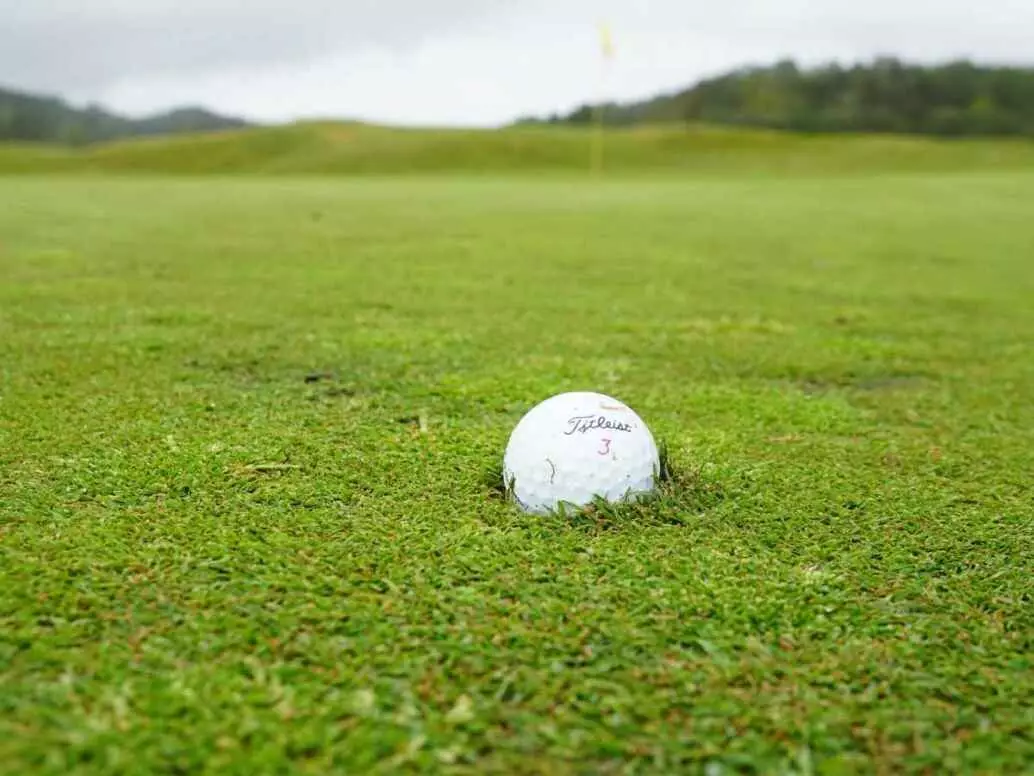
Judging from the outcome of the MyGolfSpy survey, the sport of golf is a long way from ditching white golf balls entirely. It would seem there has been some move towards embracing color, most particularly yellow, but this tends to have been either for the sake of appearances or as part of promotional activity on behalf of a sponsor.
White golf balls remain the choice of most professional golfers in most situations.
It is much more likely that color balls will find a niche within the sport rather than becoming the projectile of choice for pro golfers. Indeed white balls will be as difficult to “lose” from the sport as spiked shoes and sun shades.
Neon or optic yellow golf balls would appear to be favored over other colored alternatives, for the reason that they are likely to be the most visible. But the white ball remains the industry favorite by far, and that will remain the case for the foreseeable future.
The traditional white ball can rest easily for now at least. Centuries of golfing history conspire to ensure that any changes in sporting etiquette be rigorously tested for practicality and for image. If in doubt, the old ways will always win through.
